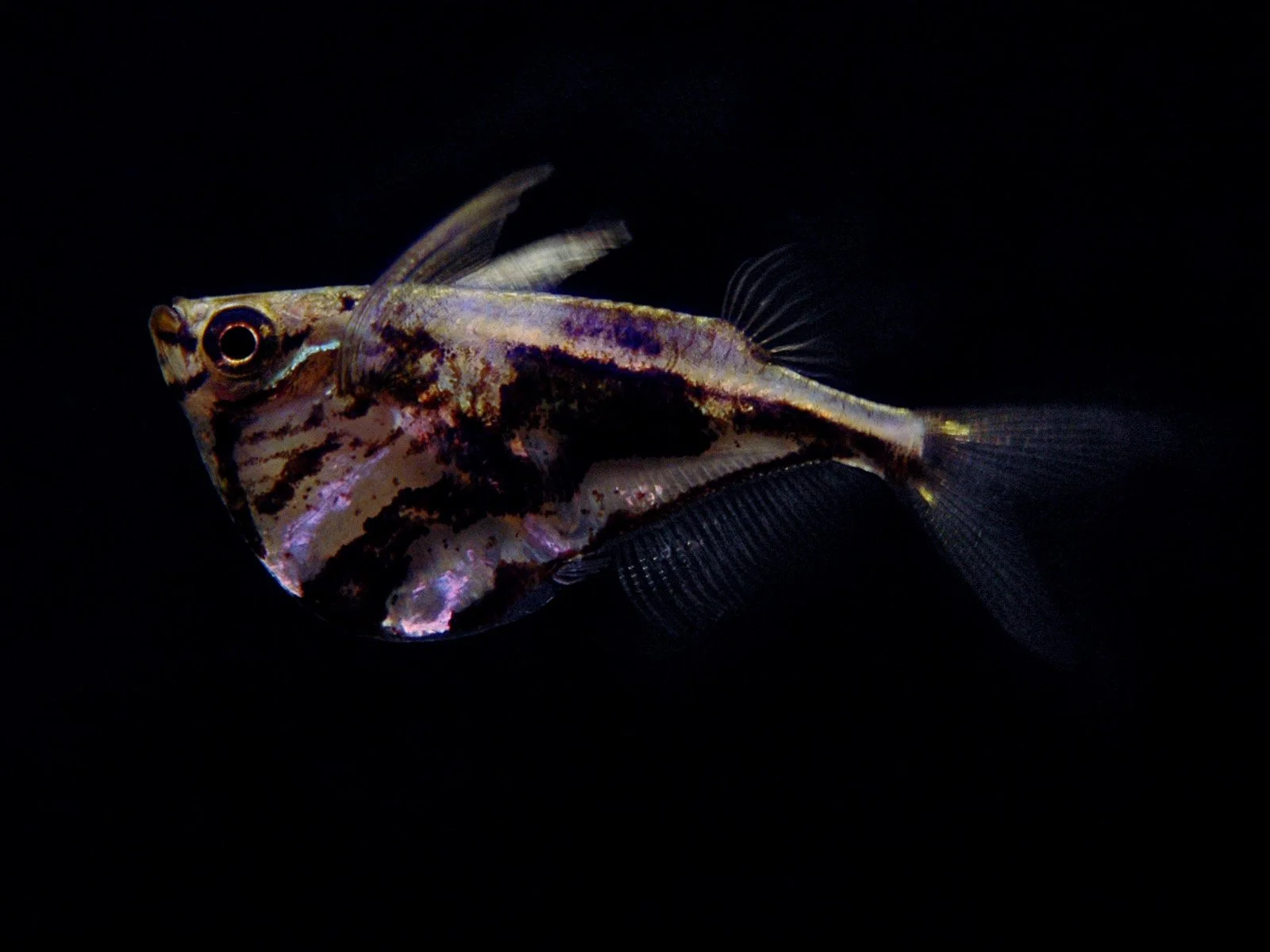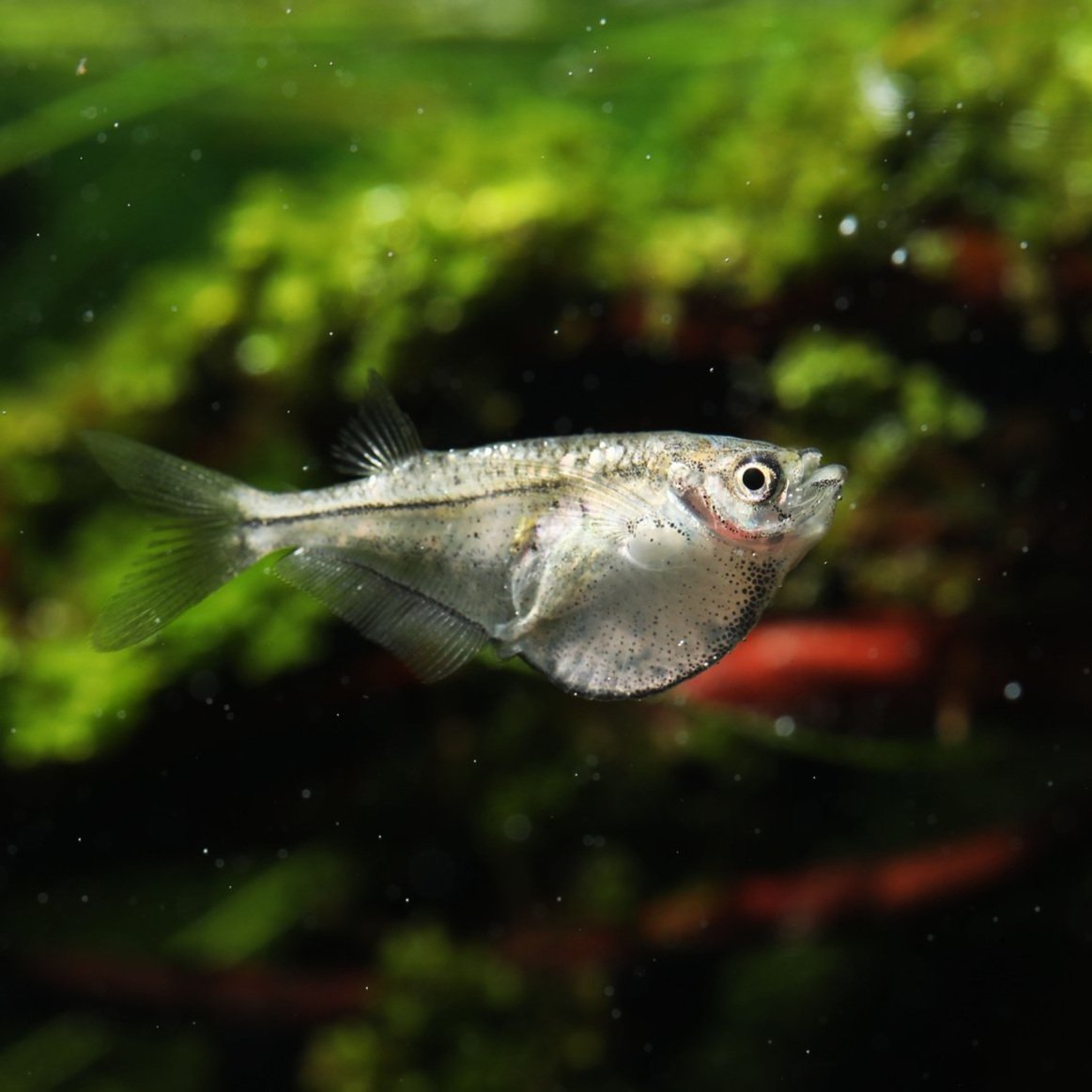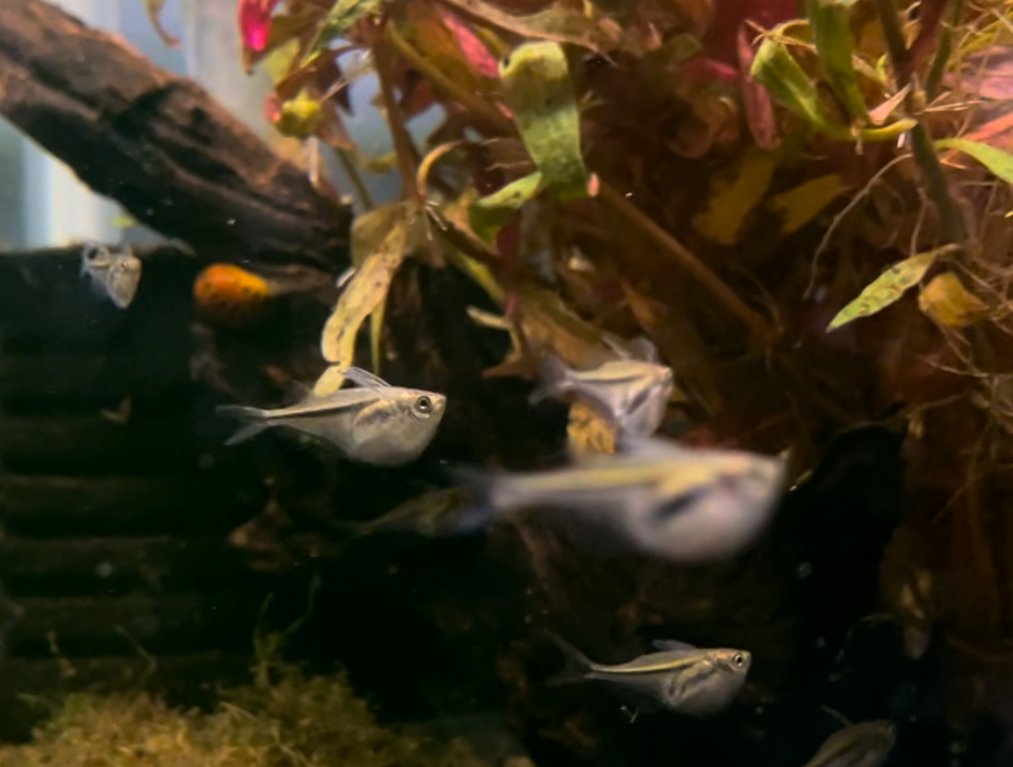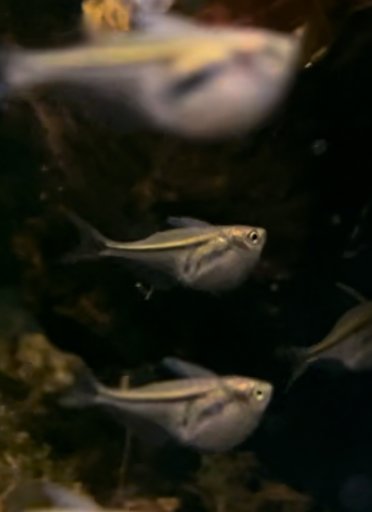 Image 1 of 2
Image 1 of 2

 Image 2 of 2
Image 2 of 2



Marble Hatchetfish
The Marble Hatchetfish, scientifically known as Carnegiella strigata, is a unique and captivating freshwater species that has earned a special place in the hearts of aquarists for its unusual body shape, striking marbled pattern, and fascinating behavior. Native to the slow-moving rivers, streams, and flooded forests of the Amazon Basin in South America, this surface-dwelling fish brings a touch of the exotic to any well-planted aquarium.
Physically, the Marble Hatchetfish is easily recognizable by its distinctive, hatchet-shaped body. The body is laterally compressed and deep, resembling the shape of a hatchet, which allows it to glide through the water with ease. The most striking feature of this species is its intricate marbled pattern, which consists of dark brown or black markings over a silvery-white or pale golden background. This pattern provides excellent camouflage in their natural environment. Mature specimens typically reach lengths of around 1.5 to 2 inches (4 to 5 centimeters), making them suitable for a variety of aquarium sizes.
In aquariums, Marble Hatchetfish thrive in well-planted tanks with plenty of surface cover. Floating plants, such as water lettuce or duckweed, are particularly beneficial as they provide shade and a sense of security, helping the fish feel more at ease. These fish are surface dwellers, spending most of their time near the water's surface, so an aquarium with a tightly fitting lid is essential to prevent them from jumping out, as they are known for their remarkable ability to leap out of the water when startled.
Water parameters for Marble Hatchetfish should closely mimic their natural environment. They prefer slightly acidic to neutral water with a pH range of 5.5 to 7.0 and temperatures between 75 to 82°F (24 to 28°C). These fish are sensitive to poor water quality, so maintaining clean, well-filtered water with regular water changes is crucial for their health and well-being.
Feeding Marble Hatchetfish is relatively straightforward, as they are carnivorous surface feeders. In the wild, they primarily feed on insects and other small invertebrates that fall onto the water's surface. In captivity, they will readily accept a variety of floating foods, including high-quality flakes, micro-pellets, and freeze-dried or live foods such as bloodworms, daphnia, and brine shrimp. Offering live or frozen foods regularly can help maintain their health and encourage natural feeding behaviors.
Breeding Marble Hatchetfish in captivity can be challenging due to their specific requirements and delicate nature. If breeding is attempted, a separate breeding tank with soft, acidic water and dense floating plants or fine-leaved vegetation is recommended. The fish typically scatter their eggs among the plants, and the eggs hatch within a few days. The fry are extremely small and require microscopic foods like infusoria until they are large enough to consume baby brine shrimp or finely powdered fry food.
Overall, the Marble Hatchetfish (*Carnegiella strigata*) is a fascinating and visually striking addition to freshwater aquariums, prized for its unique body shape, intricate marbled pattern, and interesting behavior. With proper care and attention to their specific needs, these captivating fish can thrive and bring a touch of the Amazon's beauty and mystery to aquarists of all levels of experience, enhancing the diversity and allure of any aquatic environment.
The Marble Hatchetfish, scientifically known as Carnegiella strigata, is a unique and captivating freshwater species that has earned a special place in the hearts of aquarists for its unusual body shape, striking marbled pattern, and fascinating behavior. Native to the slow-moving rivers, streams, and flooded forests of the Amazon Basin in South America, this surface-dwelling fish brings a touch of the exotic to any well-planted aquarium.
Physically, the Marble Hatchetfish is easily recognizable by its distinctive, hatchet-shaped body. The body is laterally compressed and deep, resembling the shape of a hatchet, which allows it to glide through the water with ease. The most striking feature of this species is its intricate marbled pattern, which consists of dark brown or black markings over a silvery-white or pale golden background. This pattern provides excellent camouflage in their natural environment. Mature specimens typically reach lengths of around 1.5 to 2 inches (4 to 5 centimeters), making them suitable for a variety of aquarium sizes.
In aquariums, Marble Hatchetfish thrive in well-planted tanks with plenty of surface cover. Floating plants, such as water lettuce or duckweed, are particularly beneficial as they provide shade and a sense of security, helping the fish feel more at ease. These fish are surface dwellers, spending most of their time near the water's surface, so an aquarium with a tightly fitting lid is essential to prevent them from jumping out, as they are known for their remarkable ability to leap out of the water when startled.
Water parameters for Marble Hatchetfish should closely mimic their natural environment. They prefer slightly acidic to neutral water with a pH range of 5.5 to 7.0 and temperatures between 75 to 82°F (24 to 28°C). These fish are sensitive to poor water quality, so maintaining clean, well-filtered water with regular water changes is crucial for their health and well-being.
Feeding Marble Hatchetfish is relatively straightforward, as they are carnivorous surface feeders. In the wild, they primarily feed on insects and other small invertebrates that fall onto the water's surface. In captivity, they will readily accept a variety of floating foods, including high-quality flakes, micro-pellets, and freeze-dried or live foods such as bloodworms, daphnia, and brine shrimp. Offering live or frozen foods regularly can help maintain their health and encourage natural feeding behaviors.
Breeding Marble Hatchetfish in captivity can be challenging due to their specific requirements and delicate nature. If breeding is attempted, a separate breeding tank with soft, acidic water and dense floating plants or fine-leaved vegetation is recommended. The fish typically scatter their eggs among the plants, and the eggs hatch within a few days. The fry are extremely small and require microscopic foods like infusoria until they are large enough to consume baby brine shrimp or finely powdered fry food.
Overall, the Marble Hatchetfish (*Carnegiella strigata*) is a fascinating and visually striking addition to freshwater aquariums, prized for its unique body shape, intricate marbled pattern, and interesting behavior. With proper care and attention to their specific needs, these captivating fish can thrive and bring a touch of the Amazon's beauty and mystery to aquarists of all levels of experience, enhancing the diversity and allure of any aquatic environment.
The Marble Hatchetfish, scientifically known as Carnegiella strigata, is a unique and captivating freshwater species that has earned a special place in the hearts of aquarists for its unusual body shape, striking marbled pattern, and fascinating behavior. Native to the slow-moving rivers, streams, and flooded forests of the Amazon Basin in South America, this surface-dwelling fish brings a touch of the exotic to any well-planted aquarium.
Physically, the Marble Hatchetfish is easily recognizable by its distinctive, hatchet-shaped body. The body is laterally compressed and deep, resembling the shape of a hatchet, which allows it to glide through the water with ease. The most striking feature of this species is its intricate marbled pattern, which consists of dark brown or black markings over a silvery-white or pale golden background. This pattern provides excellent camouflage in their natural environment. Mature specimens typically reach lengths of around 1.5 to 2 inches (4 to 5 centimeters), making them suitable for a variety of aquarium sizes.
In aquariums, Marble Hatchetfish thrive in well-planted tanks with plenty of surface cover. Floating plants, such as water lettuce or duckweed, are particularly beneficial as they provide shade and a sense of security, helping the fish feel more at ease. These fish are surface dwellers, spending most of their time near the water's surface, so an aquarium with a tightly fitting lid is essential to prevent them from jumping out, as they are known for their remarkable ability to leap out of the water when startled.
Water parameters for Marble Hatchetfish should closely mimic their natural environment. They prefer slightly acidic to neutral water with a pH range of 5.5 to 7.0 and temperatures between 75 to 82°F (24 to 28°C). These fish are sensitive to poor water quality, so maintaining clean, well-filtered water with regular water changes is crucial for their health and well-being.
Feeding Marble Hatchetfish is relatively straightforward, as they are carnivorous surface feeders. In the wild, they primarily feed on insects and other small invertebrates that fall onto the water's surface. In captivity, they will readily accept a variety of floating foods, including high-quality flakes, micro-pellets, and freeze-dried or live foods such as bloodworms, daphnia, and brine shrimp. Offering live or frozen foods regularly can help maintain their health and encourage natural feeding behaviors.
Breeding Marble Hatchetfish in captivity can be challenging due to their specific requirements and delicate nature. If breeding is attempted, a separate breeding tank with soft, acidic water and dense floating plants or fine-leaved vegetation is recommended. The fish typically scatter their eggs among the plants, and the eggs hatch within a few days. The fry are extremely small and require microscopic foods like infusoria until they are large enough to consume baby brine shrimp or finely powdered fry food.
Overall, the Marble Hatchetfish (*Carnegiella strigata*) is a fascinating and visually striking addition to freshwater aquariums, prized for its unique body shape, intricate marbled pattern, and interesting behavior. With proper care and attention to their specific needs, these captivating fish can thrive and bring a touch of the Amazon's beauty and mystery to aquarists of all levels of experience, enhancing the diversity and allure of any aquatic environment.






